Pages
1854 Trustee Committee on Statuary: Legal Opinion on Statuary Appropriation (page 01)
At a meeting of the Trustees of Mt. Auburn Cemetery, holden , it was
Voted. That the sum of fifteen thousand dollars be appropriated for the purchase of three marble statues, to be prepared and executed under contracts to be made with proper artists, said statues to be those of persons distinguished in American History. But this vote is subject to the following conditions, viz, first - that it shall be approved in writing by five at least of this board of trustees ; and second that the professional opinions of C.P. Curtis Esq. and the Secretary on the subject of the legality of this appropriation by this board shall be taken in writing and found to sustain the legality of such appropriation.
Attest. Henry M. Parker Secretary
-- Opinion --
The subject thus submitted to us involves two distinct questions ; first, whether the appropriation be in itself legal, and second, whether if legal the Trustees are authorized to make the appropriation.
There seems to be no room for doubt as to the second question. By Section 4th of the Charter of the Corporation it is provided that the said Trustees shall have the general management,
1854 Trustee Committee on Statuary: Legal Opinion on Statuary Appropriation (page 02)
superintendence and care of the property expenditures business and prudential concerns of the Corporation ; and of the sales of the lots in the said Cemetery, and they shall make a report of their doings to the Corporation at their annual meeting. If the Corporation's funds can be properly applied to the purchase of Statuary, - these words are large enough to show that the Board of Trustees is the proper body to make the appropriation and contract for the statues. Can the funds be properly so applied?
The present Corporation took the conveyance of the "Garden and Cemetery" not as an ordinary purchase of land by a Corporation for the purpose of establishing a Cemetery but upon sundry special trusts which limit and restrain the full liberty of the Corporation in the use of the property and its proceeds. These trusts are set forth in the tenth section of the Charter, and to that section our remarks will be principally confined ; but some additional light may be derived in the interpretation of it from a part of sections two and six. From these it appears that the "Proprietors" hold the land (s 2) " upon the same trusts and for the same purposes as the said Massachusetts Horticultural society held the same" by virtue of the statute of 1831. Ch. 69; and (s 6.) " all the rights, powers and authorities, trusts, immunities and privileges conferred upon the said Society" by
1854 Trustee Committee on Statuary: Legal Opinion on Statuary Appropriation (page 03)
said act were to be "transferred to and exercised by" the new Corporation. These provisions are important, because the Mass. Hort. Society might be called upon to enforce the execution of the trusts under the tenth section, and if there should seem to be any doubt as to the construction of the language the actual interpretation, formerly given by that Society to its own charter, would, if similar to the measure now proposed, serve in some degree as an answer to any present objection from that quarter. And even if no interpretation had been given by the Society itself, or its officers, to the Act of 1831, still the very language of that act may serve to enlarge or diminish the meaning of the present Company's charter.
It is obvious that the Corporation derives no power to appropriate monies from the proceeds of sales of lots in the original cemetery to the purchase of statuary, from the ninth section. Under that section they may undoubtedly take statuary, or money for the purchase of statuary, by bequest or donation, and contract for its preservation in the Cemetery. But the words of the Act in that section are much larger than those in the tenth, and can only have a remote bearing upon the construction of the latter, as shewing [sic], what kind of "embellishments" the legislature considered as appropriate to the Cemetery.
1854 Trustee Committee on Statuary: Legal Opinion on Statuary Appropriation (page 04)
Coming then to the tenth section we find that it provides, that the portion of the proceeds of sales to be retained by the Proprietors of the Cemetery "shall be forever devoted and applied to the preservation, improvement, embellishment and enlargement of the said Cemetery and Garden, "and the incidental expenses thereof and to no other purpose whatsoever." These last words are strong words of restraint upon the Corporation, and should lead the Trustees to to see that every appropriation made by them comes strictly under one or another of the heads thus mentioned. And it is clear that the appropriation for the purchase of statuary can come fairly and fully under one of these heads only viz, that of the embellishments of the Cemetery.
We understand that it is not enough to bring an appropriation under this head, that it should be for the purpose of making the Cemetery a more attractive resort ; of a collection of mere curiosities, or relics of ancient times, however much they might "embellish" the place, in one sense would not, in our judgment, be such "embellishments" of the Cemetery as this Section of the Act contemplates. Neither would the establishment of an historical library, though that is in some sense the best monument to the worthy dead. Yet we suppose that under the ninth
1854 Trustee Committee on Statuary: Legal Opinion on Statuary Appropriation (page 05)
section you might properly allow the heir of any of our military heroes to hang the trophies of his father's victories above a mural tablet in the Chapel, and the same might afterwards be given in trust to your care. Other memorials of the worthy dead might thus gradually accumulate under your care, and eventually the number of these relics of various kinds may make up such a collection as you would not be authorized ^ in the first instance ^ to establish as ^ an independent thing as an embellishment of the Cemetery. An "embellishment" of the Cemetery in the 10th section, - means, we think, an embellishment appropriate to, and in harmony with the place.
These distinctions, though perhaps not at first obvious, are important. Smaller ones have been made the foundation of decisions in many instances connected with the execution of trusts. In one instance where property was given in trust to repair a chapel, a grave doubt was expressed as to the propriety of expending any portion of the large accumulated income in the fittings up of the Chapel. 1. Anstruther Ref. Attorney General vs. Forster. And funds for a "grammar school" / which ^ in England means technically in a school for instruction in English, Greek and Latin) cannot, though amply sufficient, be applied to the support of instruction in the
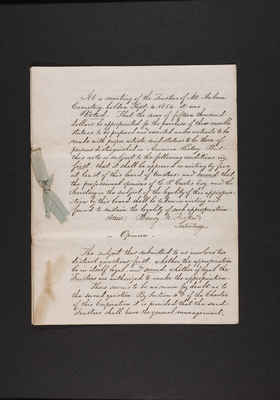
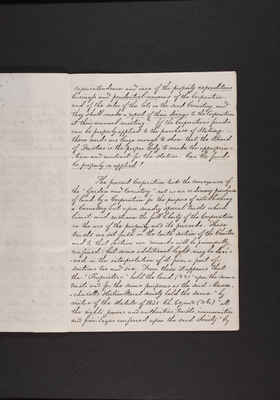
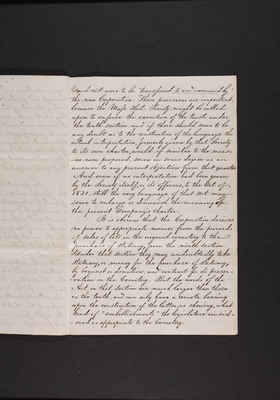
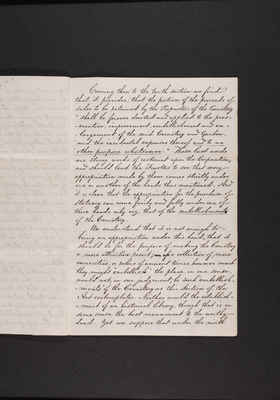
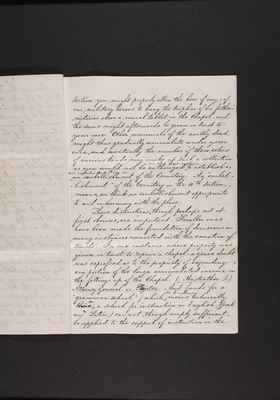

 Follow Us on Instagram
Follow Us on Instagram 